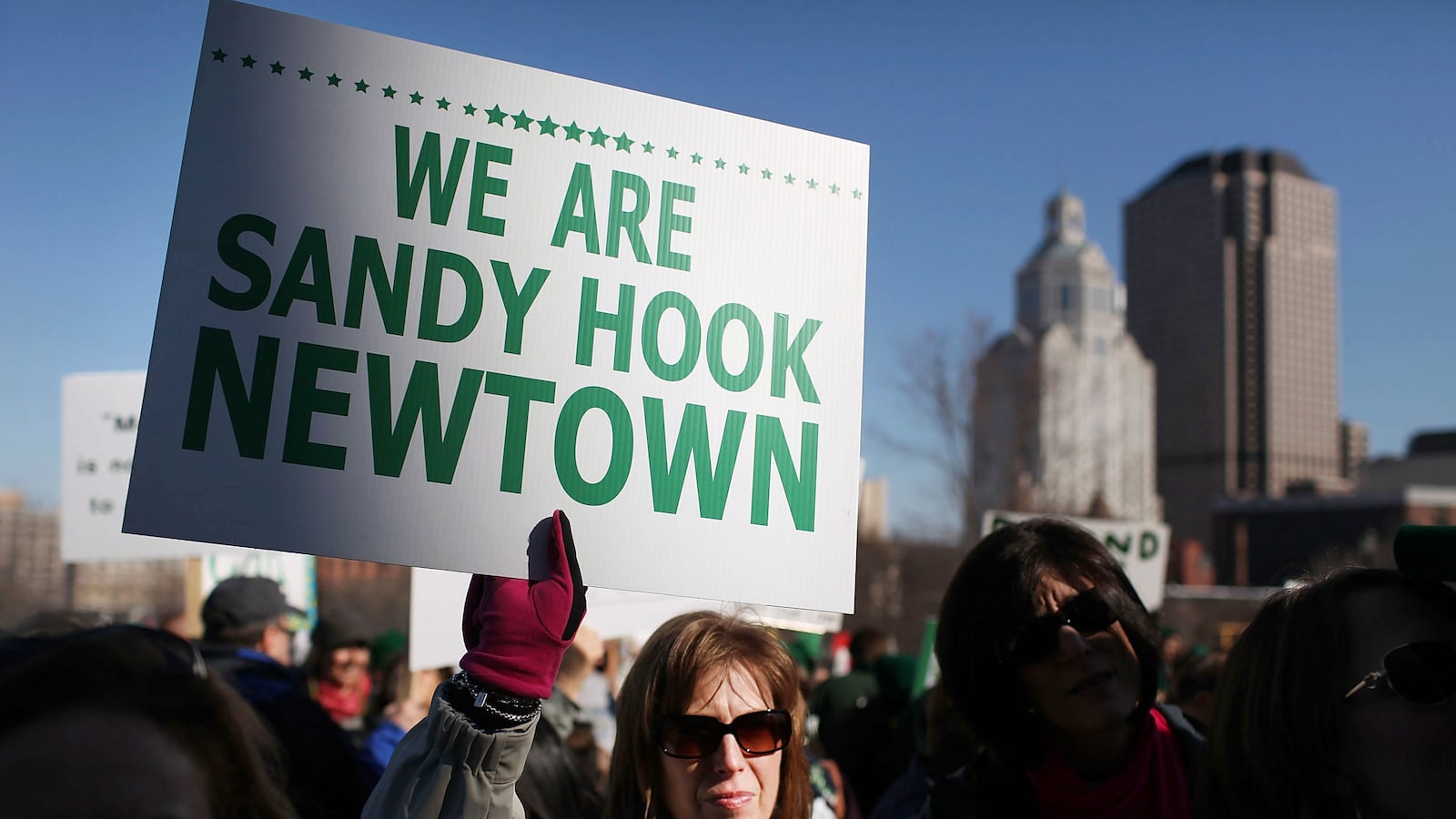Six months later, the story is familiar.
On Dec. 14, 2012, Adam Lanza burst into Sandy Hook Elementary and murdered 20 first-graders and six administrators and teachers. Two days later, President Obama visited Newtown, Conn., read aloud the names of the 26 killed and said “we can’t tolerate this anymore. We must change.”

But in the six months since Newtown, between 5,000 and 6,000 Americans have been murdered by guns, according to estimates by the Slate Gun Deaths tally and Mayors Against Illegal Guns.
An 8-year-old was killed in the backseat of her father’s car in Albuquerque. A community organizer was shot outside his front door in Philadelphia. A father buying his daughter textbooks was gunned down in Los Angeles.
The violence in Newtown made gun control the nation’s most pressing issue, after the gun-control lobby had languished in relative obscurity for decades. But in the months since the massacre, as gun control has been debated on the Senate floor and in living rooms across the country, the tally of victims of gun violence is quietly growing each day.
Carlos Franco, 68, was shot in his SUV near the Santa Monica Community College parking lot on June 7. He had been the groundskeeper for the college for 22 years. He was killed instantly. His daughter, 26-year-old Marcela, was also shot. She died two days later, after being taken off life support.
Carlos and Marcela were on campus shopping for Marcela’s textbooks. He was on his way to meet his oldest daughter at a doctor’s appointment when he was killed by John Zawahri, 23, who went on a shooting rampage around Santa Monica. Zawahri killed four other people, including his older brother and father, before being shot by police.
Franco was described as a “big family man” by his nephew, Mario Franco. “Everything he did was literally for his daughters.”

A week earlier, Sunni Rae Reza was shot and killed in Albuquerque two days before her ninth birthday. She was sitting in the backseat of a car with her father, uncle, and another man when a group of men dressed all in black began to fire into the car. Reza was the only one injured. The motive for the shooting is unclear.
In May, 22-year-old Julian Dawkins was killed by an off-duty sheriff’s assistant in the suburbs of Washington, D.C.
Dawkins was shot in the chest near his aunt’s house in Alexandria, Va., on May 22. Some are calling the killing a Trayvon Martin-style case.
Dawkins had been a shuttle driver for PBS NewsHour. He was with family to celebrate the news that a cousin had just been added to the Washington Mystics lineup in the WNBA. After the party ended, Dawkins got into an argument with Arlington Sheriff’s Deputy Craig Patterson. Patterson shot Dawkins, but claimed Dawkins had come at him with a knife. Prosecutors say Dawkins’ knife was folded away in his pocket when his body was found.
Patterson, 44, has been arrested and charged with first-degree murder and committing a felony using a handgun. Gwen Ifill of NewsHour called Dawkins “our balm and our rock” at his funeral.
Two months before, Gregory Scott, a 55-year-old father of five, was shot dead just feet from his front door in Philadelphia.
Scott argued with his cousin James outside their family deli, on the night of Feb. 28. Scott got in his car and drove away. Police say he was getting out of his car when James ambushed him and shot him in the face and head.
Scott was a drill captain for the Goldcoast Buccaneers, a mentoring program for West Philadelphia youth. Friends say he took his mentees to the Philadelphia Eagles training camp and helped feed the homeless.
He had been married for 20 years and had five children. One of his children works as a paramedic. He heard that a man had been shot at his home address and rushed to the scene to find his father dead.
Scott was found still clutching his house keys in his hand.
Vigils have been held for these victims, and their stories have been documented in the local news.
As the memory of Newtown fades and more people become victims of gun violence each day, both sides of the gun-control debate are still fighting for dominance.
While the first major gun-control bill in decades with a prayer of making it through Congress failed, the gun-control lobby has never been more prominent.
Gabby Giffords’ gun-control group, Americans for Responsible Solutions, raised $11 million in the wake of Newtown from 53,500 donors. Huffington Post co-founder Kenneth Lerer recently founded a new group, Stop the NRA, bolstered by his significant personal wealth, which will work alongside the Coalition to Stop Violence, Mayors Against Illegal Guns, and the Brady Campaign to keep the momentum on gun control going.
The New Republic’s Alec MacGillis has argued that the defeat of the background-check bill in the Senate was “not the end of hopes for gun control, but the beginning.”
The Obama administration is preparing a package of 23 executive orders on gun control, according to a recent report in The New York Times.
But the National Rifle Association has stood its ground in response to the strongest opposition it has ever faced. Some 86,288 people—a record—attended its annual meeting in May; Executive Vice President Wayne LaPierre announced that membership had reached 5 million.
To mark six months since Newtown, Mayors Against Illegal Guns, Michael Bloomberg’s gun-control group, will launch a bus drive called No More Names in Sandy Hook. The 100-day tour will travel to 25 states, lobbying politicians and reading the names of the victims of gun violence out loud—thousands since Newtown and growing.





